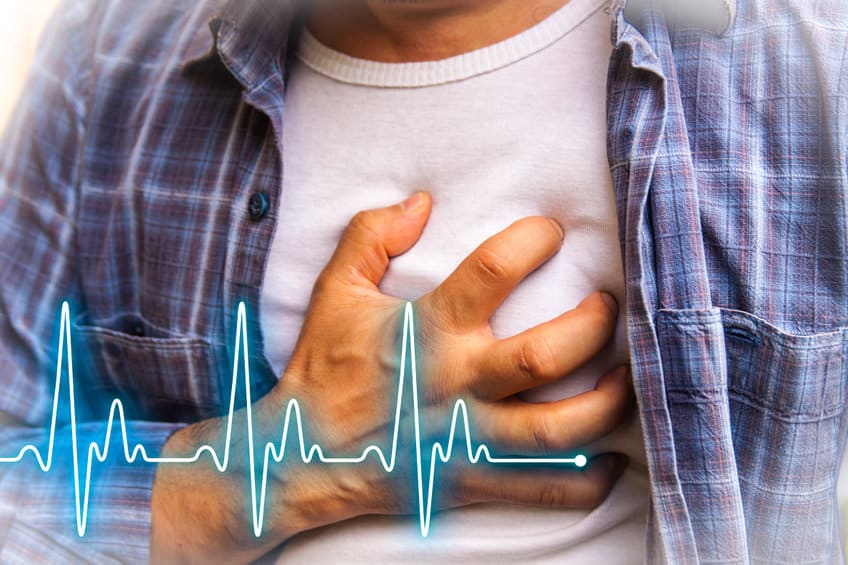By John Salak —
Knowledge is power, and when it comes to medical issues, it is often the difference between life and death for hundreds of thousands of people.
Recently, research out of Maryland and California underscored this point by unlocking secrets that help predict which individuals were susceptible to heart attacks and sudden cardiac arrests.
These insights could help 800,000 people in the U.S. alone who experience heart attacks each year, the Centers For Disease Control & Prevention reported, including more than 300,000 annually that die from sudden cardiac arrest.
These new insights focused on different predictive aspects of heart attacks. Both help physicians more effectively treat those patients either experiencing a heart attack or likely to have one.
Scientists developed a clinical algorithm at the Smidt Heart Institute at Cedars-Sinai that distinguishes between treatable and untreatable forms of sudden cardiac arrest. The algorithm has the potential to help thwart the consequences of sudden cardiac arrest—the unexpected loss of heart function—because it identifies key risk factors.
“All sudden cardiac arrest is not the same,” reported Sumeet Chugh, MD, director of the Center for Cardiac Arrest Prevention. “Until now, no prior research has distinguished between potentially treatable sudden cardiac arrest versus untreatable forms that cause death in almost all instances.”
The institute’s new algorithm could be a lifesaver for those individuals who suffer from out-of-hospital sudden cardiac arrest. A staggering 90 percent who suffer from sudden cardiac arrest die within 10 minutes of the attack, which is hundreds of thousands of lives lost annually in the U.S.
The biggest challenge in saving lives is determining which individuals would benefit most from an implantable cardioverter-defibrillator against those unlikely to benefit from the electric jolt.
“Defibrillators are expensive and unnecessary for individuals with the type of sudden cardiac arrest that will not respond to an electrical shock,” said Chugh. “However, for patients with treatable, or ‘shockable,’ forms of the disease, a defibrillator is lifesaving.”
The algorithm runs on 13 clinical, electrocardiogram, and echocardiographic variables that identify patients at a higher risk of treatable sudden cardiac arrest. The risk factors include diabetes, myocardial infarction, atrial fibrillation, stroke, heart failure, chronic obstructive pulmonary disease, seizure disorders, syncope—a temporary loss of consciousness caused by a fall in blood pressure, among others.
“This first-of-its-kind algorithm has the potential to improve the way we currently predict sudden cardiac arrest,” added Dr. Eduardo Marbán, MD, Ph.D., the institute’s executive director. “If validated in clinical trials, we will be able to better identify high-risk patients and therefore, save lives.”
Related work out of John Hopkins University unveiled a similar artificial-intelligence-based approach that can more accurately predict if and when a patient could die than a doctor alone.
The university reports its work has the potential to revolutionize clinical decision-making and increase survival from sudden and lethal cardiac arrhythmias, a dangerous condition.
“Sudden cardiac death caused by arrhythmia accounts for as many as 20 percent of all deaths worldwide, and we know little about why it’s happening or how to tell who’s at risk,” reported Natalia Trayanova, a John Hopkins professor and the study’s senior author. “There are patients who may be at low risk of sudden cardiac death getting defibrillators that they might not need, and then there are high-risk patients that aren’t getting the treatment they need and could die in the prime of their life. What our algorithm can do is determine who is at risk for cardiac death and when it will occur, allowing doctors to decide exactly what needs to be done.”
The university’s work is reported to be the first-time neural networks were used to build a personalized survival assessment for each patient with heart disease, measuring with high accuracy the chance and timing for a sudden cardiac death over ten years.
“This has the potential to significantly shape clinical decision-making regarding arrhythmia risk and represents an essential step towards bringing patient trajectory prognostication into the age of artificial intelligence,” Trayanova explained, “It epitomizes the trend of merging artificial intelligence, engineering, and medicine as the future of healthcare.”













